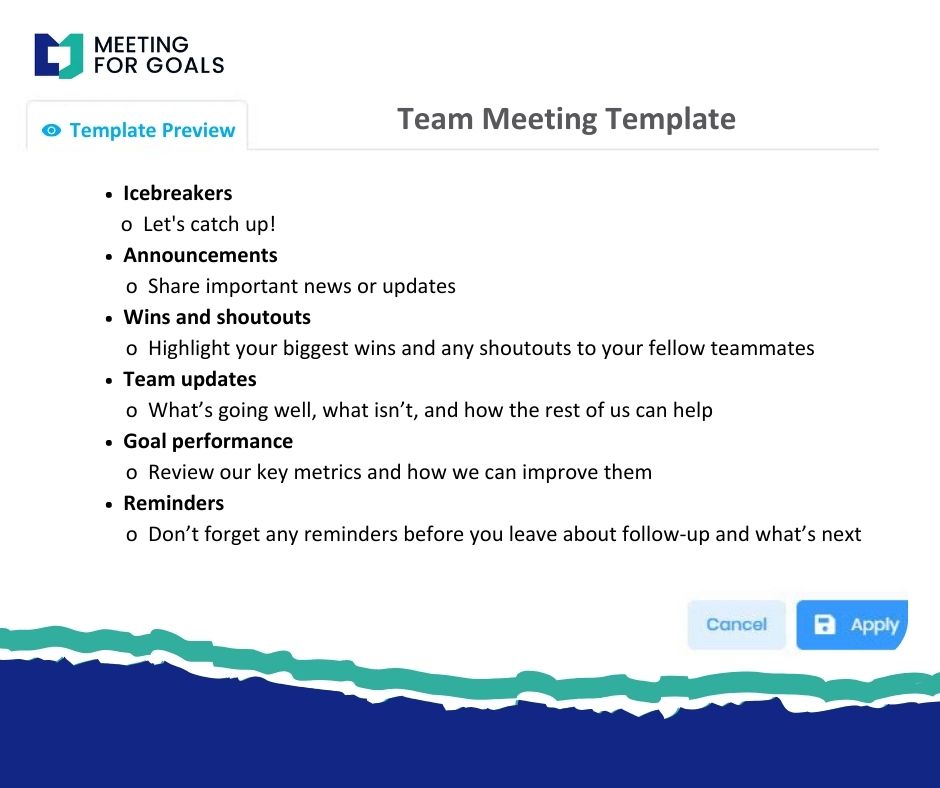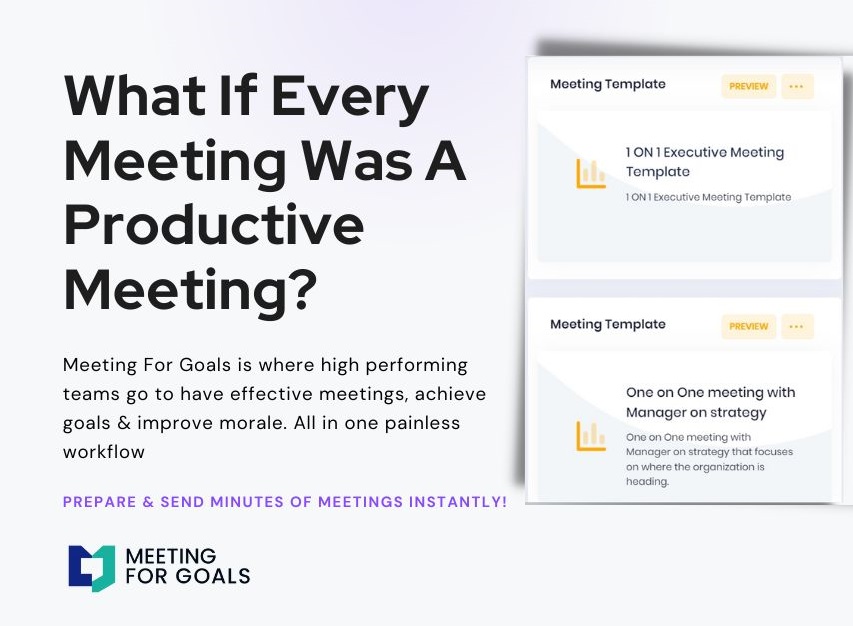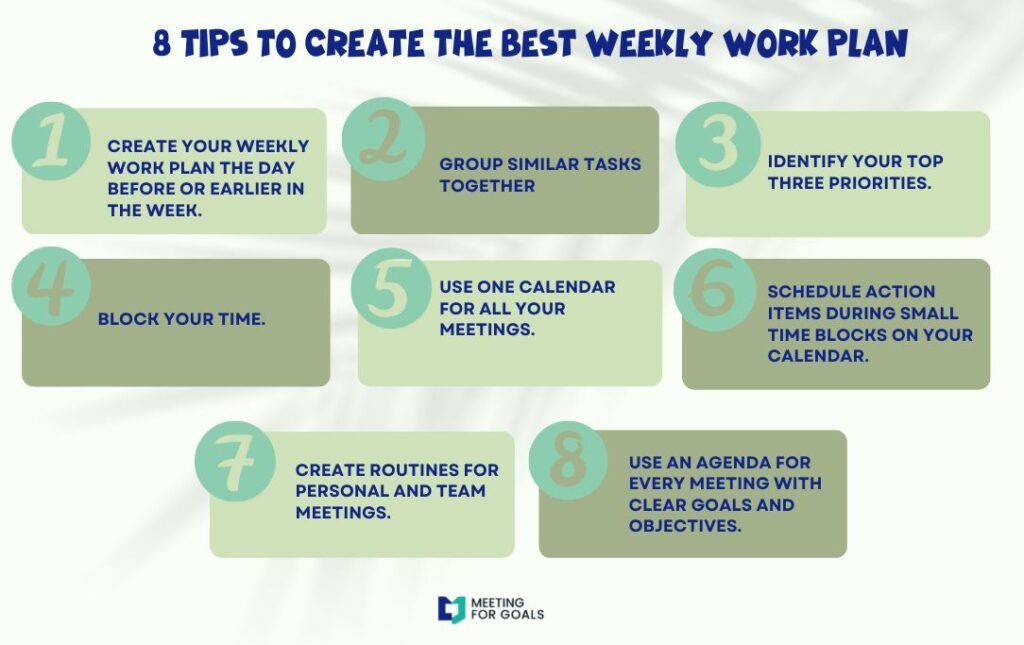Keyword After Meeting Email to Client Sample: A Complete Guide for High-Performing Teams
In today’s fast-paced business world, communication doesn’t stop when the meeting ends. For high-performing teams—especially those led by executives, directors, and VPs—sending a thoughtful, well-structured after-meeting email to clients is more than just polite. It’s a strategic move.
Whether you’re aligning on deliverables, clarifying responsibilities, or reinforcing commitments, a follow-up email keeps everyone aligned and accountable. In this guide, powered by Meeting For Goals—a meeting management platform built to help teams get more done in less time—we’ll show you how to write a professional follow-up email, explain why it matters, and provide a customizable sample you can use right away.
Let’s dive in.
I. Introduction
Meetings are where ideas are born, strategies are shaped, and relationships are strengthened. But it’s what happens after the meeting that often determines whether those ideas turn into real results.
For teams in companies with 40 to 70 employees, where collaboration across departments is the norm, staying aligned after a meeting is critical. That’s where a well-written post-meeting email to a client becomes an essential tool.
At Meeting For Goals, we know that effective meetings are just the beginning. Our platform helps teams run more focused, productive meetings—and just as importantly, ensures that the outcomes are captured and followed up on. One of the best ways to do that? A clear, professional follow-up email.
This guide is built for executives, directors, and team leads who want to improve client communication and drive accountability. You’ll learn:
- Why follow-up emails are crucial
- What to include in them
- How to write them in a way that builds trust
- And how to streamline the process using tools like Meeting For Goals
Whether you’re wrapping up a strategic planning session, a kickoff call, or a quarterly business review, the principles here will help you communicate with clarity and purpose.
If you’re looking for ready-to-use meeting templates to help streamline your process, check out our free collection at https://meetingforgoals.com/meeting_templates.
Let’s explore why these emails matter and how they can help your team and clients stay on track.
2 Minute Video
Watch a 2 minute demo of our meeting management software in action
II. Understanding the Need for Post-Meeting Emails
You just wrapped up a productive client meeting. Everyone seemed aligned, and the energy was high. So why bother sending a follow-up email? Because clarity fades fast.
Within hours, details get fuzzy, and assumptions creep in. A post-meeting email acts as a written record that keeps everyone on the same page.
Here’s why it matters—especially for leaders like VPs, directors, and C-suite executives:
- It Drives Accountability: When you summarize the meeting and outline who’s responsible for what, there’s no room for confusion. Everyone knows what they need to do and when. This keeps your team and the client moving toward the same goal.
- It Reinforces Decisions: In meetings with multiple stakeholders, it’s easy for key decisions to get lost. A follow-up email helps lock in those decisions and ensures everyone remembers what was agreed upon.
- It Shows Professionalism: Sending a follow-up within 24 hours shows that you respect your client’s time and care about the outcome of your conversation. It’s a simple way to build trust and show that you’re organized and proactive.
- It Becomes a Reference Point: Weeks or months later, you or your client may need to revisit what was discussed. Having a written summary makes it easy to go back and confirm details, especially during complex projects.
- It Keeps Momentum Going: Without a follow-up, meetings can become isolated events. But when you connect the dots between meetings with clear communication, you build momentum and drive progress.
Looking to make this process easier? With Meeting For Goals, you can automatically generate follow-up emails using notes and action items captured during your meetings. Learn more at https://meetingforgoals.com.
Still wondering how to write an effective one? Let’s break down the key components.
Adding an Agenda
How to add an agenda instantly on Meeting For Goals
III. Key Elements of a Post-Meeting Email
Writing a solid follow-up email doesn’t have to be complicated. But it does need to be clear, professional, and actionable.
Here are the key elements every post-meeting email should include:
- Subject Line: Your subject line should be straightforward and informative. Mention the meeting topic and date to give the recipient context. Examples:
- Follow-Up: Marketing Strategy Meeting – April 10
- Recap: Product Launch Planning – March 22
- Greeting: Start with a warm and professional greeting. Use the client’s name and thank them for their time. Example:
- Hi Amanda, Thank you for meeting with us today. We appreciated the opportunity to discuss your upcoming product launch.
- Meeting Summary: Briefly summarize the key points discussed. This helps everyone remember what was covered and what decisions were made. Example:
- During our conversation, we reviewed the proposed campaign strategy, agreed on a revised timeline, and discussed how to better target Gen Z audiences.
- Action Items and Responsibilities: Clearly outline what needs to be done, who’s responsible, and any dependencies. Use bullet points or a table for easy reading. Example:
- Sarah (Client): Send updated brand assets by April 14
- Mike (Our Team): Deliver revised campaign brief by April 16
- Deadlines: Include realistic deadlines for each task. This keeps everyone accountable and prevents delays.
- Invitation for Questions: Encourage the client to reach out if they have questions or feedback. This keeps the lines of communication open. Example:
- If you have any questions or need clarification, feel free to reach out. We’re happy to help.
- Sign-Off: Close with a friendly, professional sign-off. Include your name, title, and contact info. Example:
- Best regards, Jessica Lee Account Director Acme Agency jessecisaca@acmeagency.com (555) 123-4567
These components turn your follow-up email into a valuable communication tool. Want to automate this process? Sign up for Meeting For Goals today at https://app.meetingforgoals.com/TenantRegistration/Register.
IV. Crafting an Effective Post-Meeting Email: A Step-by-Step Guide
Writing a great follow-up email doesn’t have to take a lot of time. Follow these simple steps to craft one that’s clear, professional, and impactful.
- Step 1: Write a Specific Subject Line: Your subject line should tell the recipient exactly what the email is about. Examples:
- Meeting Recap: Website Redesign Kickoff – April 5
- Action Items from Today’s Sales Strategy Session
- Step 2: Start with a Personal Greeting: Use the client’s name and thank them for their time. A little courtesy goes a long way. Example:
- Hi David, Thanks again for joining today’s meeting. It was great to align on the next steps for the new product rollout.
- Step 3: Summarize the Meeting: Briefly recap the meeting’s purpose, key decisions, and any important insights. Example:
- We discussed the updated project timeline, confirmed the revised budget, and agreed to prioritize the mobile-first design approach.
- Step 4: List Action Items: Use bullet points or a table to clearly show who’s doing what and by when. Example:
- Anna (Client): Review and approve wireframes by April 12
- James (Our Team): Begin development on homepage by April 14
- Step 5: Confirm Deadlines: Reinforce the timeline and expectations. Example:
- To stay on track, we’re aiming to complete the first round of edits by April 18. Please review the designs by April 16 if possible.
- Step 6: Invite Feedback: Encourage open communication. Example:
- If you have any questions or thoughts, feel free to reach out. We’re here to support you.
- Step 7: Sign Off Professionally: Close with a friendly, professional tone. Example:
- Looking forward to our continued collaboration. Best, Rachel Kim Client Success Manager
Want to make this even easier? With Meeting For Goals, you can auto-generate follow-up emails based on your meeting notes. Learn more at https://meetingforgoals.com.
V. Sample Template for a Post-Meeting Email
Here’s a customizable email template you can adapt for any client meeting.
Subject: Follow-Up: [Meeting Topic] – [Date]
Hi [Client Name],
Thank you for taking the time to meet with us on [Date]. We appreciated the opportunity to discuss [meeting purpose, e.g., “your Q2 marketing strategy”].
Here’s a quick summary of what we covered:
Summary:
- Reviewed [key discussion point]
- Agreed on [decision or next step]
- Noted [any important insight or feedback]
Action Items:
| Task | Responsible | Deadline |
|---|---|---|
| [Task 1] | [Person] | [Date] |
| [Task 2] | [Person] | [Date] |
| [Task 3] | [Person] | [Date] |
Next Steps:
We will [mention your team’s next action]. Please let us know when [mention client’s responsibility] is complete so we can move forward.
Please don’t hesitate to reach out if you have any questions or need clarification. We’re excited to keep the momentum going.
Best regards,
[Your Name]
[Your Title]
[Your Company]
[Your Email]
[Your Phone Number]
Need more templates like this? Visit https://meetingforgoals.com/meeting_templates for free downloadable resources.
VI. Conclusion
In business, it’s not just the meeting that matters—it’s what comes after. A well-written follow-up email helps reinforce decisions, clarify responsibilities, and keep projects moving forward.
For high-performing teams, especially those led by executives and directors, this simple habit can dramatically improve accountability and client satisfaction. It shows that you’re organized, attentive, and committed to delivering results.
At Meeting For Goals, we believe every meeting should lead to action. That’s why our platform is built to help teams run focused meetings, document decisions, assign tasks, and send follow-up emails—all in one place.
If you’re ready to streamline your meeting workflow and improve team performance, sign up today at https://app.meetingforgoals.com/TenantRegistration/Register.
Explore more tools and resources at https://meetingforgoals.com to help your team get more done—with less stress.
Let every meeting be a step forward. It starts with a great follow-up email.



